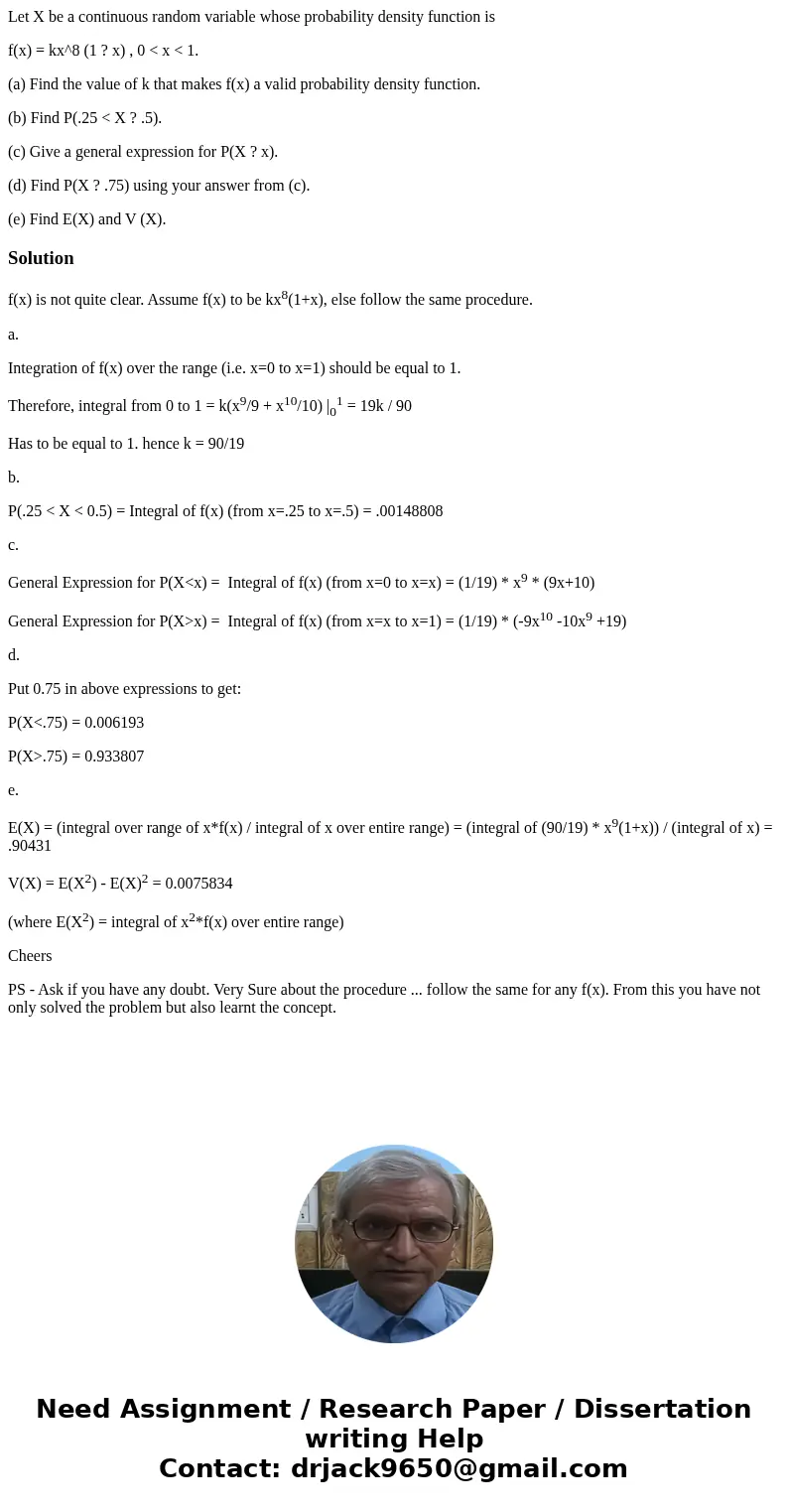Let X be a continuous random variable whose probability dens
Let X be a continuous random variable whose probability density function is
f(x) = kx^8 (1 ? x) , 0 < x < 1.
(a) Find the value of k that makes f(x) a valid probability density function.
(b) Find P(.25 < X ? .5).
(c) Give a general expression for P(X ? x).
(d) Find P(X ? .75) using your answer from (c).
(e) Find E(X) and V (X).
Solution
f(x) is not quite clear. Assume f(x) to be kx8(1+x), else follow the same procedure.
a.
Integration of f(x) over the range (i.e. x=0 to x=1) should be equal to 1.
Therefore, integral from 0 to 1 = k(x9/9 + x10/10) |01 = 19k / 90
Has to be equal to 1. hence k = 90/19
b.
P(.25 < X < 0.5) = Integral of f(x) (from x=.25 to x=.5) = .00148808
c.
General Expression for P(X<x) = Integral of f(x) (from x=0 to x=x) = (1/19) * x9 * (9x+10)
General Expression for P(X>x) = Integral of f(x) (from x=x to x=1) = (1/19) * (-9x10 -10x9 +19)
d.
Put 0.75 in above expressions to get:
P(X<.75) = 0.006193
P(X>.75) = 0.933807
e.
E(X) = (integral over range of x*f(x) / integral of x over entire range) = (integral of (90/19) * x9(1+x)) / (integral of x) = .90431
V(X) = E(X2) - E(X)2 = 0.0075834
(where E(X2) = integral of x2*f(x) over entire range)
Cheers
PS - Ask if you have any doubt. Very Sure about the procedure ... follow the same for any f(x). From this you have not only solved the problem but also learnt the concept.

 Homework Sourse
Homework Sourse